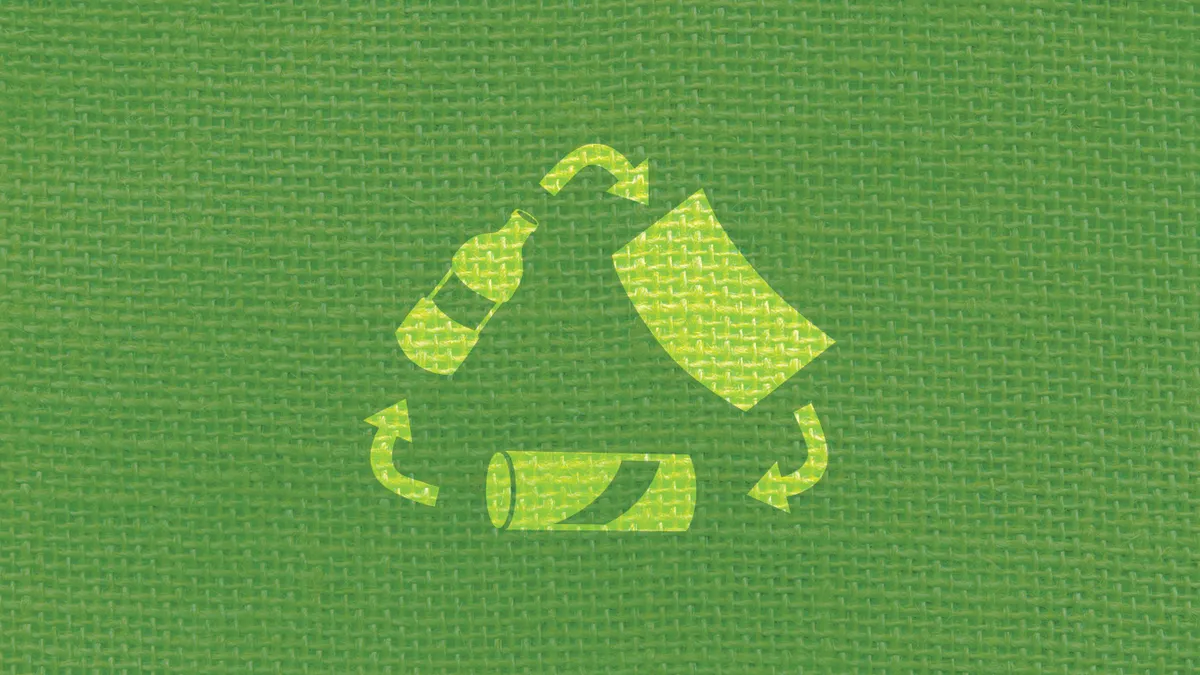Editor's Note: The following is a contributed piece. More information on what that entails and how you can submit is available here.
The Atlantic and The New York Times recently carried near identical stories about what they portrayed as the "end of recycling" due to China's ban on scrap imports from the U.S. They outlined how this sent the price of recycling soaring, causing some cities to begin cutting down or even eliminating programs and sending materials to incinerators or landfills.
They got some of the story right, but omitted the fact that some 20 years ago, Big Waste companies made a deliberate decision to disrupt the then well-functioning dual-stream systems by convincing cities to switch to single-stream recycling. This caused contamination rates to increase and led to the market crunch started by Chinese import restrictions.
In missing this, both publication did their readers a disservice by leaving them uninformed about why this happened. Nor did they mention how this moment is a much-needed wake-up call to reform a recycling system that has been redesigned to meet the needs of a handful of large waste companies rather than maximize recycling for the public good.
Pitfalls of single-stream recycling
Recycling is a cyclical industry. In the past 50 years, commodity prices fell — in some cases more than they have during the current China-induced crisis. In each instance, many in the media proclaimed the death of recycling. Each time, recycling revived and returned better than before.
After rising quickly in the 1980s and 1990s, recycling rates slowed in 2000 and peaked to around 34% by 2010, where, according to the most recent EPA data, the country has remained since. Most cities had programs that collected paper separately from glass, metal and plastic, minimizing contamination and allowing for cost-effective processing that was attractive to local and regional markets. According to a 2016 EPA study (based on 2007 data), the U.S. recycling industry comprised of more than 757,000 jobs, $36.6 billion in wages and $6.7 billion in tax revenue.
At the close of the 20th century, most homes had recycling service. Recyclables that were collected in dual-stream systems had less than 10% contamination at local sorting facilities, which made them highly desirable to domestic processing plants. Citizens and small business networks did their job to promote recycling by working hard and long to promote laws that mandated recycling and composting.
Other new rules encouraged reuse and minimum scrap content in finished products. Container deposit laws, dedicated industrial parks and waste surcharges that capitalized a public-private recycling infrastructure were all components of an increasingly sophisticated system that waste hauling companies had to adhere to in order to keep their market share while still allowing small local operations to flourish.
Wall Street told Big Waste for decades that recycling diversion was "the enemy of [waste industry] profits" that had to be halted — or materials would continue to be diverted from landfills, "where they are supposed to go." The vibrant, environmentally-sound network was disrupted. Big Waste was content with a stagnation of U.S. recycling at 34%, which kept their lucrative hauling and landfill monopolies in place.
The nation’s largest waste collection and disposal companies pushed a system that allowed all recyclables to be dumped in the same container, promising that this would lead to increased diversion from landfills — and cities eagerly adopted it. Single-stream collection replaced dual-stream at an accelerated pace after being introduced in the 1990s, and by the mid-2000s, it was well on its way toward becoming the predominant collection method throughout the country. Today, 9 of the 10 largest U.S. cities use single-stream.
Single-stream systems did increase participation, but not actual recycling — contamination levels climbed toward 30% in some cases. For a number of years, China was willing to accept these increasingly contaminated bales, becoming the favorite dumping ground for America’s waste companies. U.S. residents believed that whatever they dumped into that single container ended up being recycled.
But China wised up as labor costs rose in their expanding economy. The country stopped accepting our contaminated materials, and soon other importing countries did the same. But by that time — like Gresham’s law about bad money pushing good money out of circulation — China’s two-decade willingness to accept contaminated materials had already undermined U.S. recycling markets.
This made cities dependent on large-scale processing facilities that produced low-grade materials and often don't recover any quality glass – 20% of the single-stream recycling mix. In many cases, the companies that run these facilities also manage — and profit far more from — collection and landfill disposal, disincentivizing them from maximizing recycling. Big Waste promoted the mantra of single-stream with evangelical enthusiasm.
The downside of this transformation in recycling? The collapse of domestic markets, particularly in the paper industry, as Chinese importers bid up the price of secondary materials.
A promise of cleaner streams
China’s abrupt cutoff of markets for contaminated scrap, while doing significant short-term damage, is spurring companies to revive a domestic scrap-based processing and manufacturing ecosystem. It is also forcing cities to confront the shortcomings of their recycling infrastructure.
The pivot to domestic markets has begun in earnest. Sunil Bagaria, president of GDB International, recently described China's scrap ban as the "shock" the company needed during a plastics recycling conference. "We woke up because of the China ban, and I'm glad we woke up," he said, as reported by Waste Dive.
In the wake of National Sword, GDB International went from exporting plastic film scrap overseas to pelletizing it into post-consumer resin for domestic sale.
“If plastic scrap is a valuable commodity in other countries, then it is also valuable here," Bagaria noted. "There is more value in selling pellets than in selling scrap … the investment will pay off multiple times."
Keith Ristau, president and CEO of Far West Recycling, reported during the same conference panel that the company's mixed paper, PET, HDPE and plastic film bales are now sold within North America.
New or additional capacity will be available at 17 North American paper mills in less than two years. At that point, paper recycling capacity in the US will be greater than it was right before the Chinese embargo — except now, U.S. companies will have to compete with foreign-owned mills as more Chinese investment comes into the country for paper, plastic and electronic scrap recycling. Chinese companies want materials in the U.S. waste stream and are willing to process them into feedstock that can be shipped back to their homeland industries.
Our cities can take advantage of this new market development by producing cleaner materials for both domestic and international markets through dual-stream or sensibly scaled and locally operated single-stream processing plants — as seen in Boulder, Colorado and Minneapolis, Minnesota – to add value. Local governments have a clear path forward out of the tight spot engineered by Big Waste.
We need to usher Big Waste out of recycling and let common sense and entrepreneurialism take over. The U.S. recycling movement is just as vibrant as ever; it enjoys support from every cross section of the country, transcending race, class, gender, age and political affiliation.
Recycling never died, and it is not dying. It is adjusting to a strange new set of circumstances that are not of its own making — but for which it has solutions.
Neil Seldman is a co-founder of the Institute for Local Self-Reliance and director of its Waste to Wealth program. Peter Anderson is executive director of the Center for a Competitive Waste Industry.





















